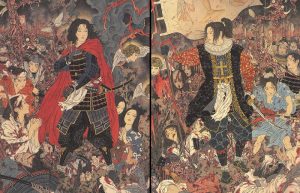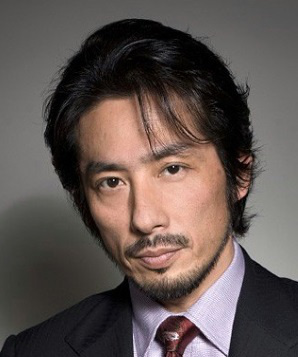Christians versus Samurai: What caused the bloodiest rebellion in Japanese history
 Japan is traditionally associated with two religions – Shintoism and Buddhism. But in fact, Christianity has existed in it for several centuries. True, the relations between Japan and Christianity are very complex, and probably the peak of complexity was the events known as the Shimabar rebellion – after which the Shinto Christians were represented by bloody rebels, and the Christians bill the Shinto for their brutally tortured co-religionists.
Japan is traditionally associated with two religions – Shintoism and Buddhism. But in fact, Christianity has existed in it for several centuries. True, the relations between Japan and Christianity are very complex, and probably the peak of complexity was the events known as the Shimabar rebellion – after which the Shinto Christians were represented by bloody rebels, and the Christians bill the Shinto for their brutally tortured co-religionists.
Coming to Deus on the Islands
Christianity arrived in Japan with the Portuguese. Until the sixteenth century, Japan lived for a long time almost in isolation from world processes (although, for example, the Mongols tried to conquer it – but they treated ships much worse than horses). And in the sixteenth century two very important events happened: the uprising of the warlike Oda Nobunaga and meeting Europeans.
Who knows what would happen if the Portuguese would sail at some other time, but Oda Nobunaga’s political plans included weakening the power of the Buddhist clergy, trade with the big world, and all sorts of reforms and innovations, which he was going to borrow from the big world. So the Portuguese, along with Christian missionaries, came to them very handy.
True, the preachers faced a number of problems caused by the total difference in mentality. There were problems and purely linguistic ones. Since there was no suitable word in Japanese to denote an omnipotent deity that was not comparable with any animated trees, the Jesuits simply used the Latin word deus, pronouncing it in Japanese fashion – deus. Ironically, this word was very consonant with the word “lie”, so until you figure it out, it seems as if you are listening to the glorification of vice – well, as if in Europe they were preaching to the glory of a god named Sin.
Nevertheless, the missionaries were so successful that by the time of the death of Nobunaga (whom the Buddhists, without repairing, called a demon), the principality of Shimabar on the island of Kyushu became almost a bastion of Christianity. A monastery and a seminary were built there, and the number of local Catholics was estimated at seventy thousand people. By 1614, there were already half a million Catholics in Japan.
Stamping icons
Shortly after the death of Nobunaga, his projects began to be curtailed. To begin with, considering the Christian principality too independent, the military leader Toyotomi Hideyoshi forbade the spread of Christianity in Japan and declared Portuguese priests to be carriers of dangerous false doctrine. They were ordered, under pain of death, to leave the country with their servants. For twenty days. In addition, Hideyoshi destroyed several large churches.
The Portuguese left, but managed to inform the flock that Hideyoshi hates Christianity because of their irrepressible lust: they say, Christian commoners refuse to rejoice when this pagan pulls them to bed, and it disturbs him. However, some time after the expulsion of the missionaries, Christians were not particularly persecuted. But in 1597, the authorities went into open conflict, killing twenty-six Christians, moreover, painfully.
First, they cut off one ear, then forced to follow the path of shame through the streets, and finally crucified on crosses. A long death was meant for them, but one of the crucified began to preach, and, fearing rebellion, the authorities gave the order to urgently kill the people hanging on the crosses. The clothes from the dead were immediately torn off by the crowd: people were in a hurry to preserve the holy relics, because before them, no doubt, were blessed martyrs for their faith.
In 1614, having learned about half a million Catholics, Hideyoshi forbade not only to preach, but also to profess Christianity. Mass persecution began. People, under the threat of prison or execution, were forced to renounce their faith and trample down icons (according to legend, the most cunning went along the icons without defiling their faces, and thus could consider themselves Christians further). The most persistent were tied up in straw and set on fire.
An amazing coincidence: shortly after the persecution began, natural disasters fell on Japan. Typhoons and crop failures led to mass ruin and famine; here the authorities increased taxes, which were already not easy to pay. From malnutrition and poverty, people do not become kinder, and Christians saw in the incident also a sign of God’s punishment. The desecration of shrines, the destruction of churches, the killing of believers should have been stopped. And more taxes. Taxes should have been stopped too. All this led to the Shimabar rebellion in 1637.
Headless buddha
Statues of Buddhas standing without a head still remind of this explosion of popular indignation in Kyushu – the rioters beheaded the “pagan idols”, which for them also personified the authorities supported by the Buddhist clergy. According to various estimates, more than twenty thousand people participated in the uprising. There were men and women, peasants and ronin (samurai without overlord). Their leader was a sixteen-year-old boy named Jerome. At least they baptized him with Jerome. In the world, his name was Amakusa Shiro, and he was, of course, a noble family.



